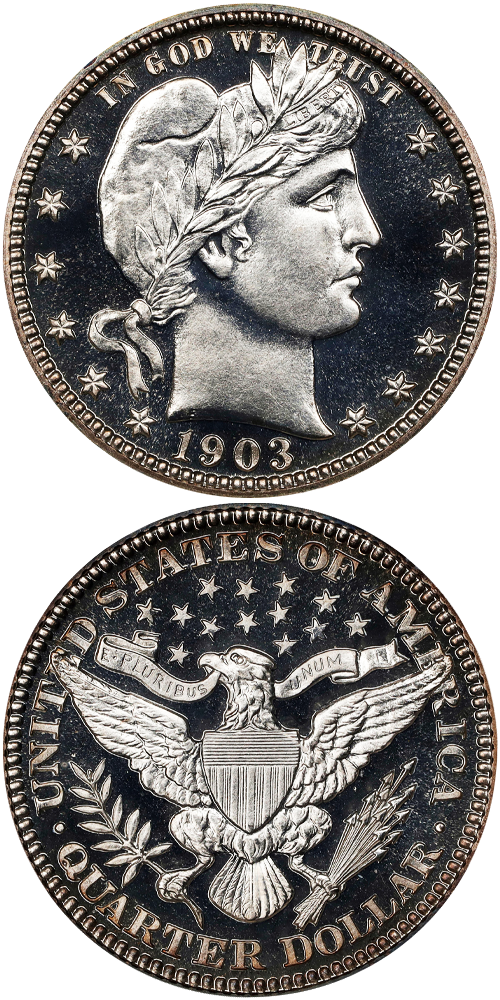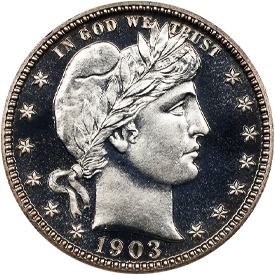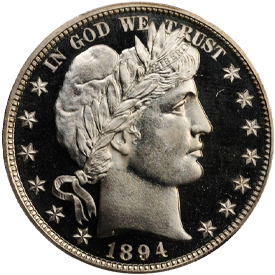Designed by: Charles E. Barber
Issue Dates: 1892-1915
Composition: 90% silver, 10% copper
Diameter: 24.3 mm
Weight: 6.25 grams (96.45 grains)
Edge: Reeded
Proof Mintage: 17,299
Proofs were produced at the Philadelphia Mint for all Barber quarter years from 1892 through 1915 (but not 1916). Rarest among this is the 1914, of which just 380 were struck, followed by 1915 (of which only 450 Proofs were minted). Actually, all Proof Barber coins of all denominations are fairly scarce. Many of those struck have met with varying fates in the meantime, not the least of which is harsh cleaning in the hands of those who are supposed to protect them and hold them most dearly, numismatists. Although certain dates are scarcer than others, most demand today comes from those assembling type sets, and as a consequence, most dates are valued approximately equally.
The first year, 1892, witnessed the highest mintage with 1,245 pieces struck. The following 24 years saw annual Proof mintages in the 500-to-900-coin range with the exception of the final two years. Most Proof Barber quarters today fall into the Choice PR-63 to 64 range, and can be acquired in the $800 to $1,000 range. Gem PR-65 and 66’s are not scarce, and remain widely available in the $1,500 to $2,500 range. Superb Gem PR-67s and 68s are somewhat scarce, but anyone with a budget of over $3,500 should have little difficulty finding one.
Cameo coins are not particularly rare, with about 20% of the certified coins earning that designation. Deep or Ultra cameos are tougher though, with just over 2% of the coins qualifying in that area. Most deep cameos appear before 1902, or after 1907 as the preparation of dies from 1902 through 1906 generally precluded the appearance of a deep contrast between the devices and the fields. Expect to pay anywhere from a 50% to a 100% price premium for coins exhibiting cameo contrast.








